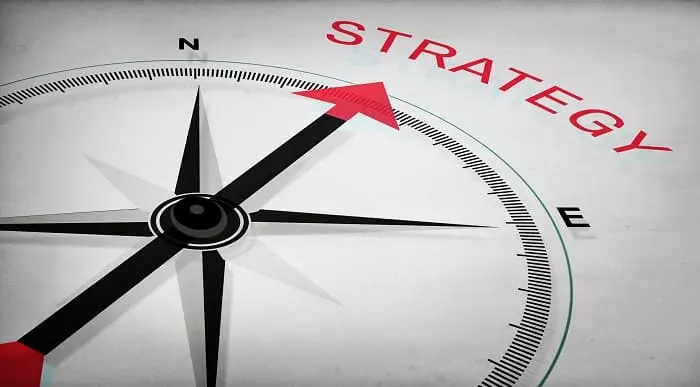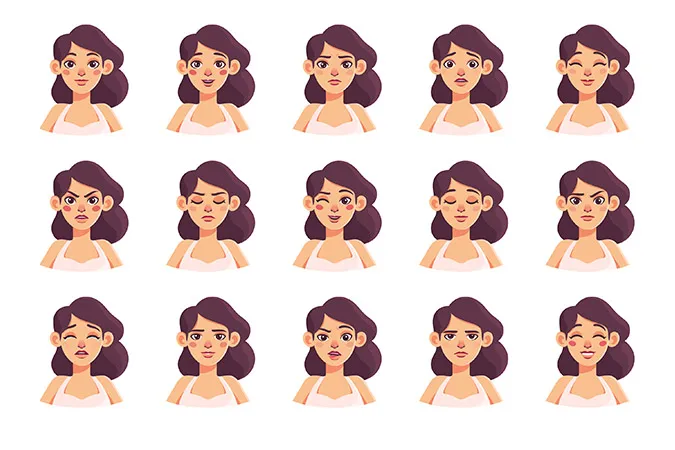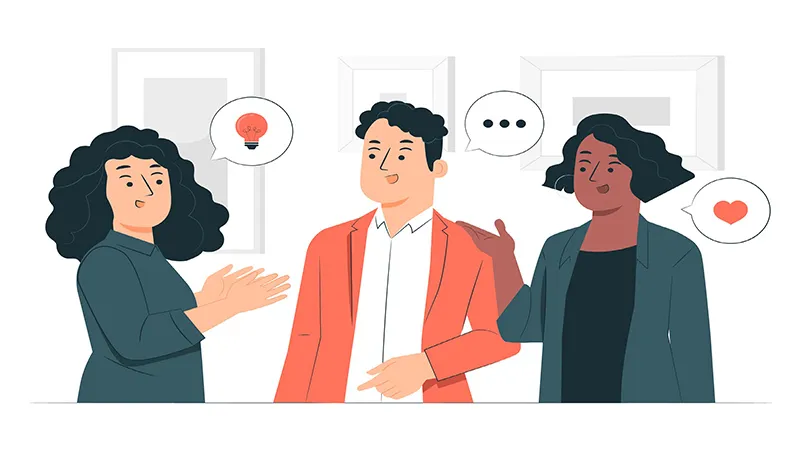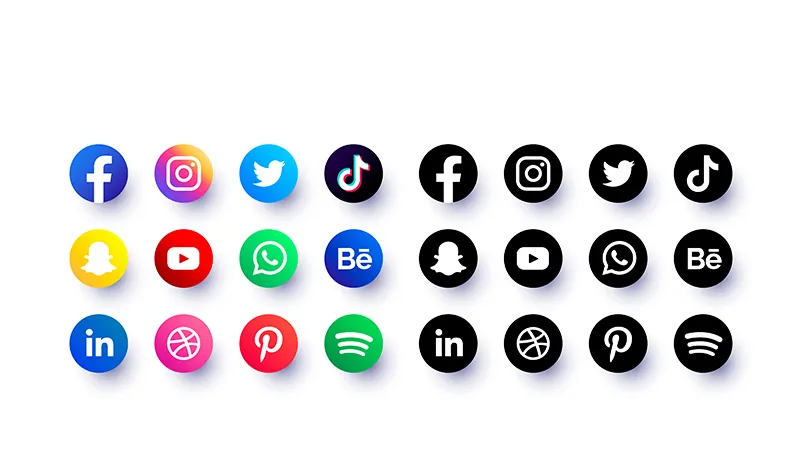Business Skills
What are the Key Features of Effective Communication? 7C’s of Communication
If you’re having trouble with professional communication, you’re not alone. In fact, ineffective communication in the workplace and poor teamwork are cited as two major causes of corporate failure by 86% of business executives. In fact, LinkedIn has an excellent article on it called “Communication failure: a silent business slayer”.
So without having a deep understanding of soft skills like effective communication, you cannot expect to grow much in your career. So, what are the key features of effective communication? They are called the 7Cs of communication.
The seven C’s of communication are a set of guidelines for efficient written and spoken communication. They were first introduced by Cutlip and Center in Effective Public Relations in 1952. These are:
- Clarity
- Correctness
- Conciseness
- Courtesy
- Concreteness
- Consideration
- Completeness
These demonstrate how important it is for team members’ messages to be easy to understand, short, and useful. You can achieve that goal by employing a few basic qualities of good communication. Here’s a look at those characteristics and how you can use them.
Table of Content
Key Features of Effective Communication: The 7Cs of Communication
The 7Cs of communication have been here for quite a long time, and they are a major area of study in business communication. If you study business, “how do you ensure you are an effective communicator” will be in your curriculum in some form. However, businesses have advanced, and new areas of communication have erupted. We’ll address those too.
But first, let’s look at the basics, the 7Cs of communication or in simpler terms, the characteristics of effective communication:
Clarity
Your reader is considerably more likely to understand and act on your message if your speech and writing are clear. Consider this to be the pinnacle of effective communication.
If, on the other hand, your reader must wade through irrelevant information or superfluous jargon, they will most likely fail to understand your message. Instead, begin with a clear communication aim in mind and use concrete, precise language to make your argument.
Clarity progresses over numerous stages.
Are You want to Develop Communication Skills for Business?
To achieve your objectives, it is critical to communicate well during negotiations. Our Communication Skills for Business will help you improve your office and professional relationships, speed up processes, and resolve conflicts.
First,
It is critical to understand the aim of the message you are communicating. The recipient should be informed as to why they are receiving the message and what you hope to accomplish by delivering it. If there are many objectives, each should be stated separately.
Second
It is critical that the communication’s content be clear. Avoid jargon, use basic language, and simple structures, and concentrate on the key aspects of your message.

Business Communication Course Online
- Accredited Courses
- Tutor Support Included
- 3 Installment Plan at checkout
- 14 Days Money Back Guarantee
Correctness
When your communication is correct, it is appropriate for your audience. It will fit right with them. Furthermore, correct communication also means that the messages are error-free. Therefore, both the facts and the language and grammar you employ must be correct. If your audience notices flaws in either, they will become distracted, and your credibility will suffer. Your conversation will be less effective as a result.
To check for correctness, ask yourself the following questions:
- Do the technical terms you use correspond to your audience’s degree of education or understanding?
- Have you proofread your work for grammatical errors? Keep in mind that spell checkers do not catch everything.
- Is every name and title spelt correctly?
Conciseness
It is critical to stay to the subject and keep your messages short and straightforward when communicating messages. Your audience will not read six sentences if you can convey your message in three. Don’t keep repeating yourself. This will not only bloat your message, but the reader or the listener will also either get bored or go out of sync with you if they can’t properly follow you.
The more you speak, the greater the possibility of misunderstanding. Avoid this risk by concentrating entirely on the important ideas you must present.
So, when you communicate concisely, you stick to the point and keep it brief. Ask yourself the following question to keep your message concise:
- Are there any adjectives or filler words you can get rid of? In examples of effective communication, you’ll see that they exclude them from the final draft of the message.For instance “In order to” has the same meaning as “To”. “You know” basically has no meaning in most sentences and we only use them as a transition to the next sentence.
- Are there any irrelevant sentences?
- Have you made the same argument multiple times in different ways?
Courtesy
Courteous communication is open, friendly, and honest. There are no subliminal insults or passive-aggressive tones. You should consider your reader’s point of view and be sympathetic to their needs.
Being nice and showing your audience that you appreciate them can help you improve communication and its effectiveness. Your messages should be welcoming, professional, considerate, respectful, open, and truthful.
So, to help guarantee that you are courteous, constantly employ empathy and evaluate your communications from the perspective of the audience.
Concreteness
When shaping your communication, you must be explicit and ensure that the reasoning and messages you use fit together, build on each other, and support each other. Your arguments should be founded on solid facts. You should check if the opinions that you’re presenting are from reliable sources. You should provide indisputable evidence to back up your claims.
It may be necessary to help your audience understand the solid quality of what you’ve built. Provide examples that demonstrate the relevance of your words.
So, when your message is concrete, your audience will understand what you’re saying. There are specifics, vivid facts, and laser-like focus. Your message will have a strong foundation.
Consideration
It is rational when your speech is coherent. The text’s tone and flow are consistent, and all points are connected and relevant to the main issue.
In addition to ensuring that each communication you issue is coherent in and of itself, you should also maintain message consistency while sending numerous communications.
Completeness
A complete message provides the audience with everything they need to be informed and, if necessary, to take action. To check for completeness in your message, consider the following question:
- Is there a “call to action” in your message so that your audience knows exactly what you want them to do?
- Have you included all relevant information, such as contact names, dates, times, and locations?
Variations of the 7Cs
Modern communication needs a few extra “key features of effective communication” to be most effective. Let’s look at two of them.
Credibility
Your message should appear credible to your audience. Remember, just because a fact is true doesn’t make people believe in it right away. So the presentation matters a lot here.
This is especially vital when talking with a group that is unfamiliar with you.
Creativity
Creativity is a major part of the effective use of communication in today’s world. People are busy building their careers. If they have to stop and listen to you, you should at least give some effort to make it worthwhile. Creative communication keeps your audience interested. So before you communicate anything to your audience, ask yourself,
- Is your message creative in its communication?
- Does your message have the charm to hook their attention right away?
- Does the flow of the message have the same creativity going so that the audience’s interest will stay more or less the same?
Here we have listed 20 jobs to consider if you have good communication skills.
Top Courses of this Category
Non-Verbal Communication
Remember, the key features of effective communication skills aren’t limited to spoken or written communication alone. You should also be mindful of the following things:
- Active Listening Skills
Talk less and listen more. Your work environment will become so much better for you the more you learn to listen to what others have to say.
- Facial Expressions
If your facial expression is misinterpreted, your message may end up losing its effectiveness.
- Emotional Intelligence
Emotional Intelligence (EI) is the capacity to comprehend and control your own emotions as well as the emotions of those around you. People with strong emotional intelligence understand what they are feeling, what their feelings imply, and how their emotions affect others.
If you’re weak at these skills, you should develop them to eliminate your barriers to effective communication.
- Eye Contact
Eye contact demonstrates focus and interest in what is being stated. Your audience will feel more connected if you maintain proper eye contact with them. Proper eye contact also shows respect and empathy, two of the features of effective communication.
- Body Language
Study positive body language and posture so you’ll appear friendly and confident.
- Social Media
Social media is an intricate platform where communication can quickly fall apart if you’re not careful. The use of emojis, react buttons and shares can sometimes be misinterpreted. Make sure that you double-check how your message is going to be understood.
Recognise the 10 effective communication skills for social workers, here.
FAQs
What are the 7 features of effective communication?
The 7 features of effective communication are-
- Clarity
- Correctness
- Conciseness
- Courtesy
- Concreteness
- Consideration
- Completeness
what does effective communication mean?
The process of exchanging ideas, thoughts, opinions, knowledge, and data so that the message is received and understood with clarity and purpose is known as effective communication. Both the sender and the receiver are satisfied when the communication process is successful.
What are the main features of all types of communication?
The 7Cs of communication are the main features of all types of communication-
- Clarity
- Correctness
- Conciseness
- Courtesy
- Concreteness
- Consideration
- Completeness
Why is effective communication important in health and social care settings?
Given that miscommunication can wreak havoc on a patient’s well-being, effective communication is even more important in health and social care settings.
How to be an attentive listener?
Listening is a conscious activity that relies on three fundamental skills: attitude, attention, and adjustment. These skills are referred to as triple-A listening.
How can you communicate effectively?
To communicate effectively, you should-
- Don’t interrupt others, let them talk.
- Don’t make assumptions about other people.
- Show them you are paying attention.
- Pose direct inquiries.
- Recognize that they might disagree with you.
Conclusion
The better you are at sharing your thoughts through good communication techniques, the more effective you will be at influencing others. Learning the key features of effective communication will help you become a more decisive personnel and streamline workplace productivity. Remember, the time you invest in ensuring excellent communication will always be worthwhile. This will quickly take you up the ladder and make you a successful leader.
What to Read Next:
- What is Distributed Leadership? Importance of Distributed Leadership
- How to Write a Personal Development Plan
- Examples of Transferable Skills that Employers are Looking for
- What are Interpersonal Skills? 19 Examples of Interpersonal Skills
- 20 Jobs to Consider if you have Good Communication Skills – Details and Overview














